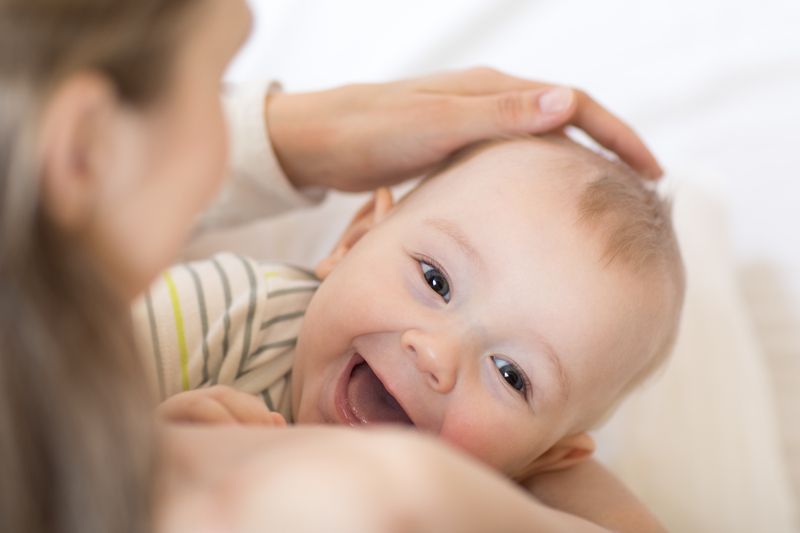Sore, Cracked Nipples
Sore and cracked nipples are one of the most common reasons why some women give up on breastfeeding. Nipple sensitivity in the beginning (first week or two) is normal, your nipples need to become accustomed to the extra attention.

Got a Sore or Cracked Nipple?
Sore and cracked nipples are among the most common reasons some women give up breastfeeding. Nipple sensitivity in the beginning (first week or two) is normal, and your nipples need to become accustomed to the extra attention. Some mothers also experience pain during the first few minutes while breastfeeding when their babies latch on (this is normal).
Should my baby continue to breastfeed if my nipples are bleeding?
The blood cannot do anything to the baby. Even if the cut is infected, a mom can continue to breastfeed.

Reasons Why You May Have Cracked Sore Nipples
- Engorgement. The baby might struggle to achieve a good latch when the breasts are too full.
- Biting and gumming. The baby may start to bite when they begin teething. Some babies bite when the milk is not flowing fast enough.
- It may be difficult for a baby to latch on correctly if the mother has nipple irregularities such as inverted/flat nipples.
- The baby may have sucking problems that create a bad latch. An uncomfortable breastfeeding position can also cause a bad latch. The mother's nipple should be positioned far back towards the soft palate of her baby's mouth.
- Thrush can cause pain and discomfort.
- A milk blister / blocked nipple pore.
- Inflammation of a Montgomery tubercule (small knobs on the areola)
- Vasospasm (learn more about Raynaud's syndrome here)
- Skin conditions like psoriasis, eczema, or other infections like herpes.
- Cracked or sore nipples are not always the cause of a bad latch.

The Tushbaby Hip Carrier
With its ergonomic design and comfortable waistband, Tushbaby provides optimal support for you and your baby. Say goodbye to shoulder and back pain from traditional carriers, as Tushbaby evenly distributes your baby's weight, relieving strain and promoting better posture.
Symptoms to Look Out For
1. White “blanching" of the nipples/areola.
- Sometimes caused by a bad latch or sucking problems.
- Vasospasms, which are the constriction of blood vessels. (Also sometimes called Raynaud's phenomenon.)
- The baby has a strong clenching reflex. Some premature babies may clench their jaw if anything enters the mouth. This is a problem that is usually outgrown within a few days. The other can wait until her baby extends their tongue to cover the gum ridge before latching on, and this could reduce the clenching.
2. The appearance of the nipple and areola.
- It may look shiny, red, and flaky or have a rash or white spots. The baby may also have white spots inside the mouth or have a yeast diaper rash. These are all signs of thrush.
- If there are no signs of thrush, you might have a blocked nipple pore “bleb."
- If there is a blister on the Montgomery tubercules, this can indicate an infection. You can use a warm compress and gently squeeze the area to see if there is a milk blockage. You must see a doctor for antibiotics if the infection is very bad.
- A raised area of skin or red bumps can indicate that you might have other skin problems like eczema, herpes, dermatitis, psoriasis, or may have come into contact with poison ivy.
General Things to Consider
- When you need to unlatch your baby, do so gently.
- Some ladies like to “rest" the nipple and give it a chance to heal, but it is recommended to continue to breastfeed if possible. Breast shields can be used for short periods to help provide the nipples a chance to heal. The primary cause for the latch should be addressed too.
- Breast shells keep your clothing away from the nipple and can help give your nipples a breather, but they can sometimes also cause plugged ducts and skin irritation.
- Breast milk is the best medicine for sore, cracked nipples. Rub your breast milk on the sore spots. Breast milk is antibacterial and will heal cracked nipples faster. Do not use breast milk for this reason if you suspect you have thrush. Yeast feeds on the sugar in milk.
- If the skin is badly broken, you can ask your doctor for a safe antibiotic ointment.
How to Prevent Sore, Cracked Nipples
- Ensure that your baby is latched on well and that you are both comfortable while breastfeeding. Is my baby getting enough milk?
- Wear bras made out of breathable fabrics such as cotton. Also, avoid breast pads that are made with plastic liners.
- Avoid using soap to clean your nipples; water is fine. Do not use any products like perfume or powder on your breasts. These can cause drying and even infection. Make your own breast milk soap.
- Do not rub your nipples to harden them; this will only worsen the pain. Do I need to prepare my breasts for breastfeeding?
- Try to avoid the use of artificial nipples; these can cause sucking issues.
- If you are using a breast pump, ensure that the flange fits your breast size.
